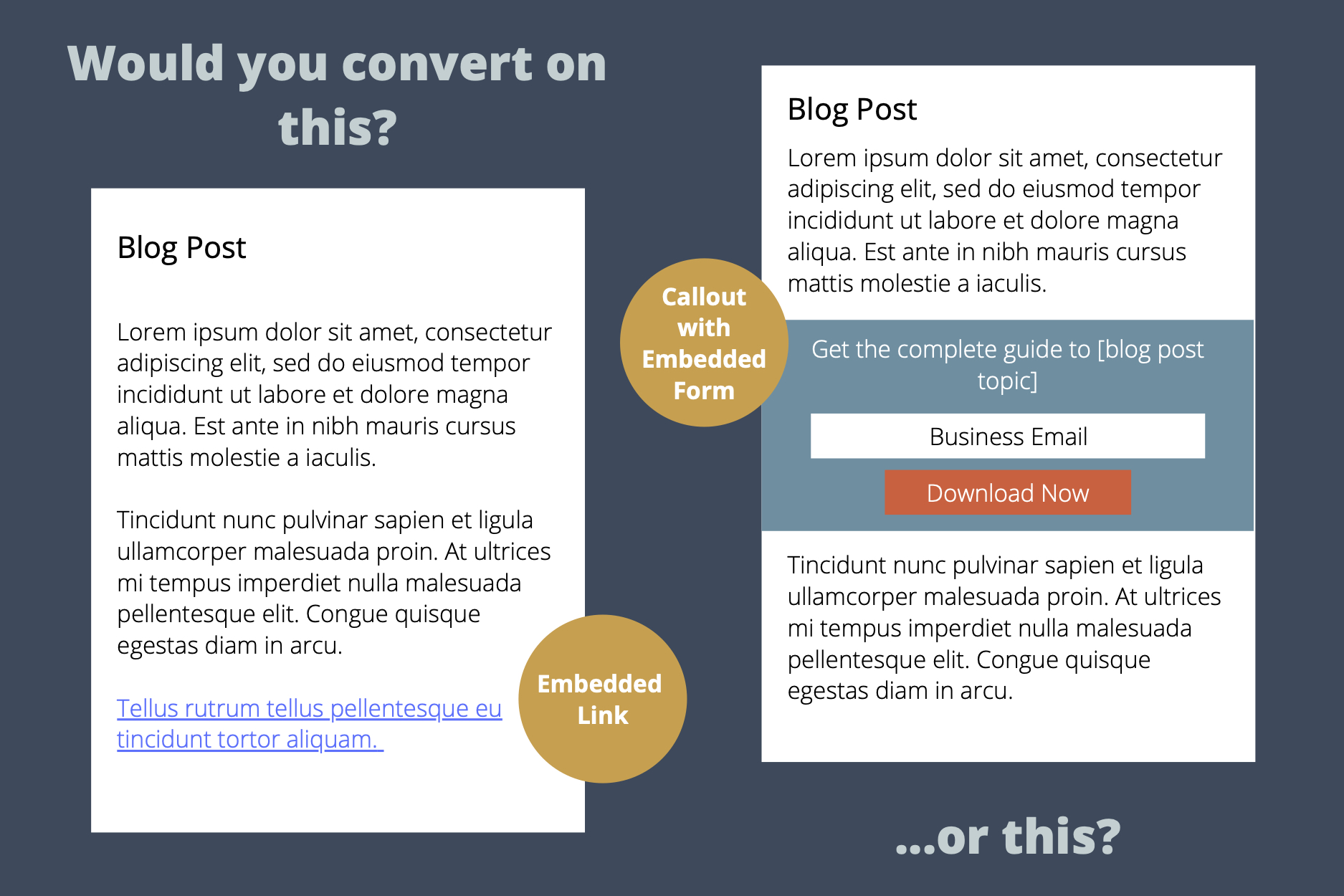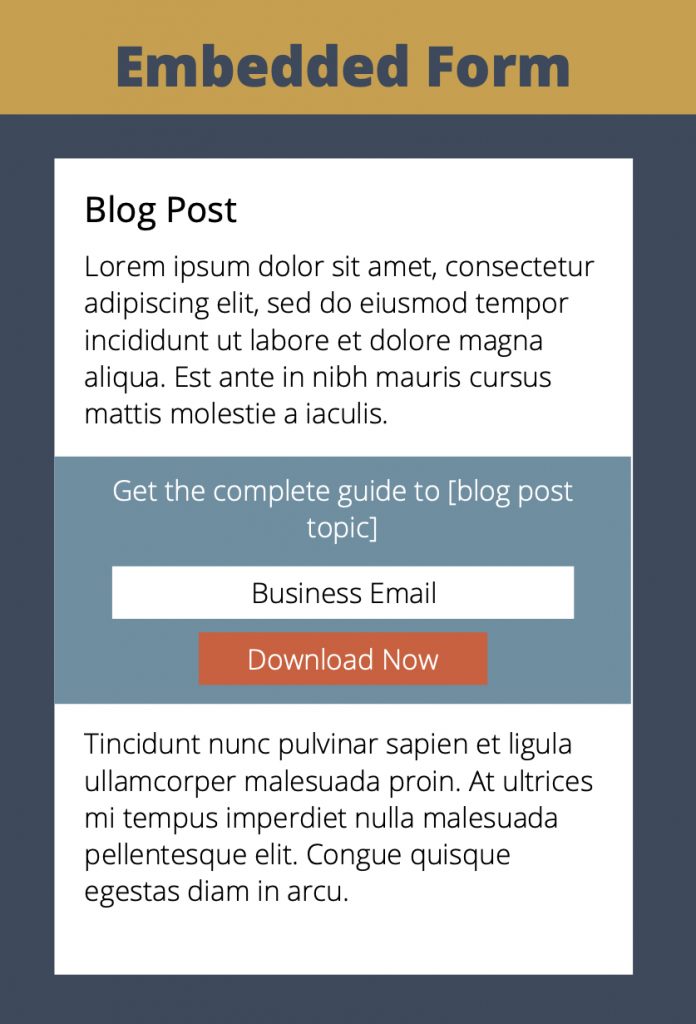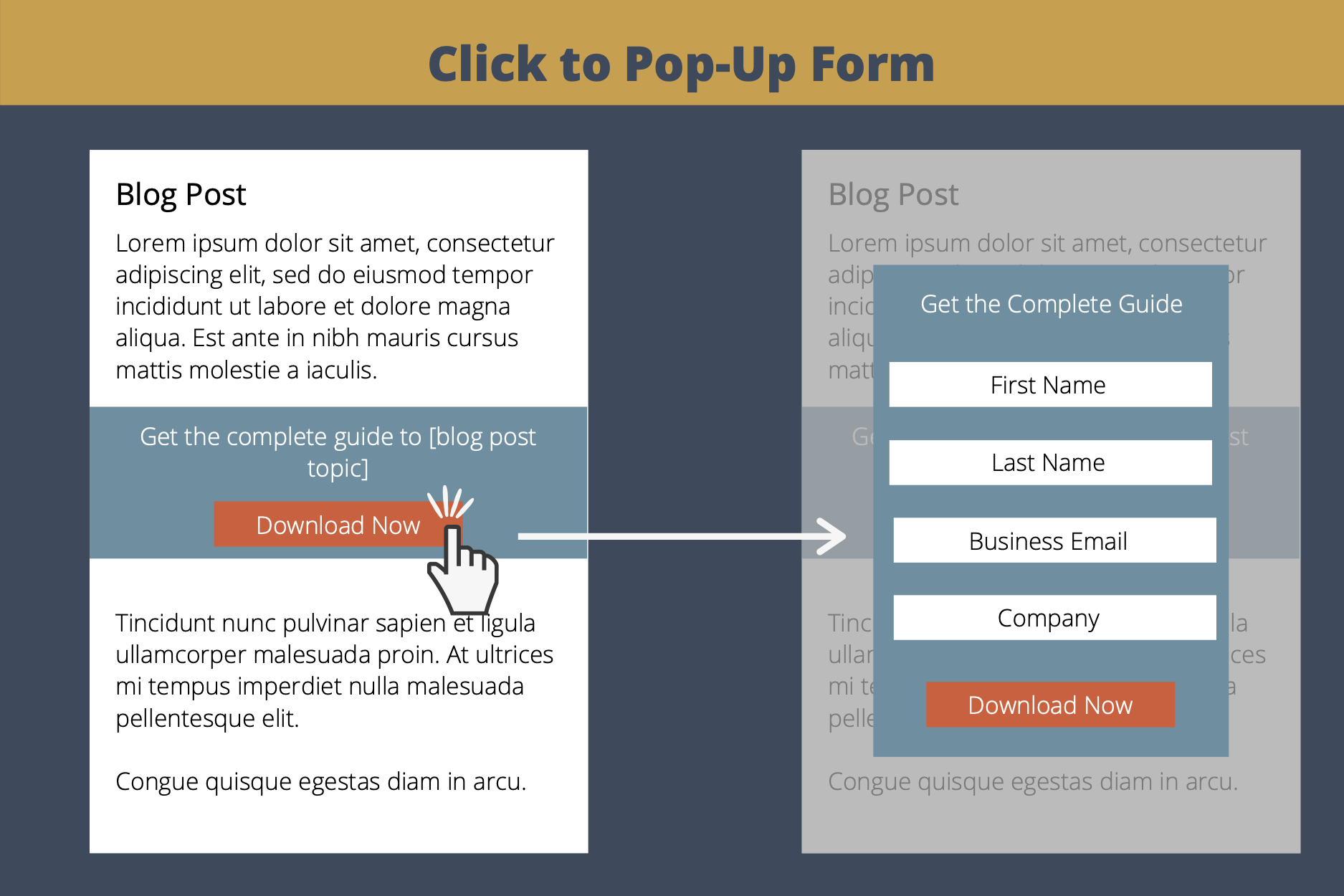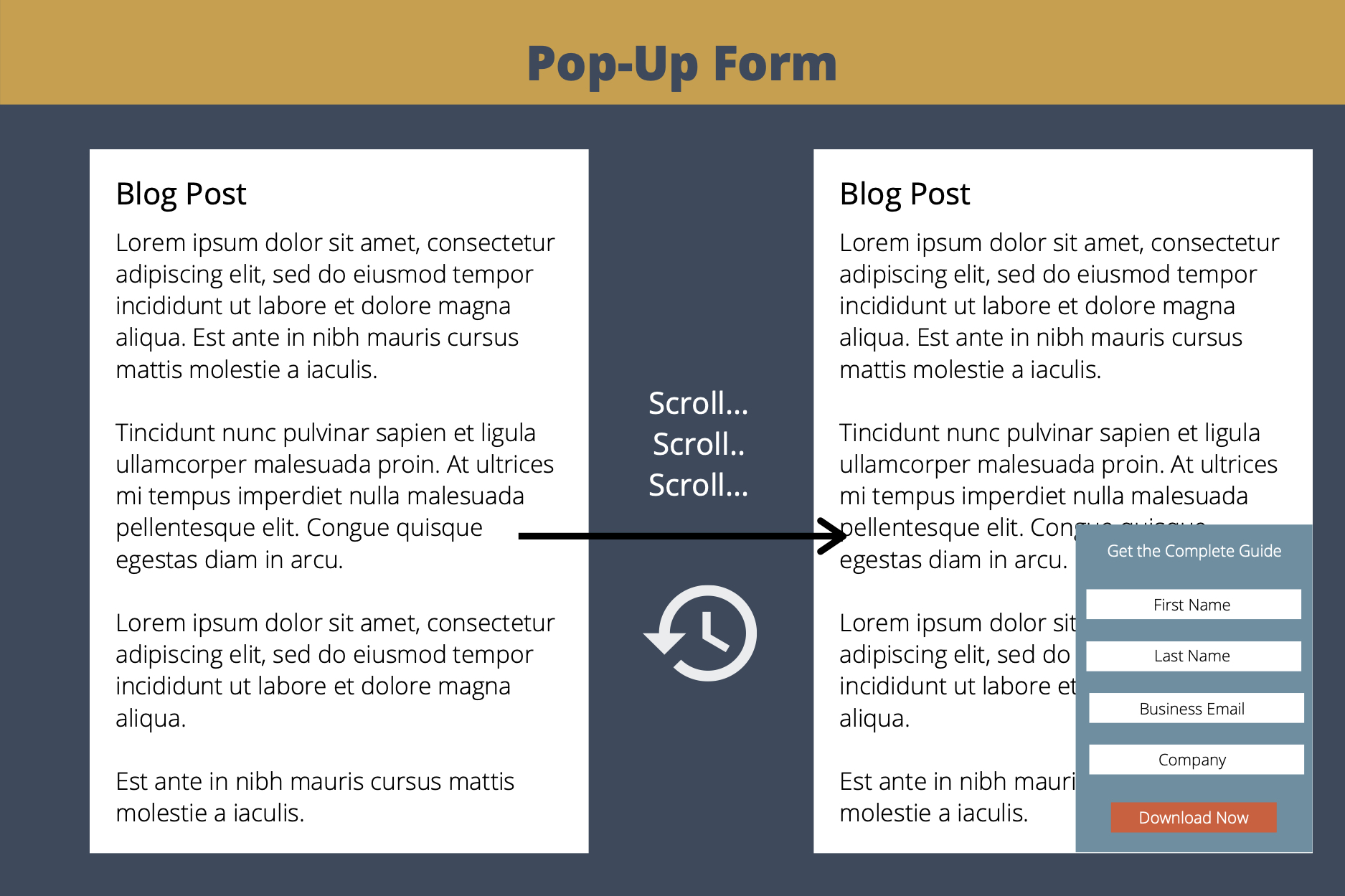Organic B2B Conversion Rates: 3 Easy Ways to Increase B2B Conversion Rates
B2B marketing is all about generating quality leads that result in sales. Achieving the desired consumer action (conversion) is the first step of that process, so increasing your conversion rate is critical. There are many different strategies and theories on how to improve these numbers, but here we review our top three strategies for increasing organic B2B conversion rates.
Improving your B2B conversion rate is the key to increasing sales and, ultimately, revenue.
Want to take your B2B content marketing to the next level?
Download our comprehensive 20-page guide.
Hint: This is an excellent example of a conversion opportunity that uses all of our tactics 😉
Quick Definition: Organic B2B Conversion Rate
To effectively implement these organic B2B conversion rate tactics, we need to review some terminology first:
- Conversion rate: This is the percentage of users who take the desired action, calculated by dividing the number of conversions by the total number of visitors.
- In our context: The number of people who provide their contact information in a form (whether to download content or simply contact us) is divided by the total number of visitors to the page.
- Organic marketing strategy: A strategy to generate website traffic to your business over time without using paid advertising or sponsored posts. It can reference website traffic generated through search engine optimization (SEO), links from other websites, or non-sponsored social media posts.
- In our context: We find implementing an SEO strategy is best for B2B organizations, so this post focuses on increasing conversion rates through your website content (web pages or blog posts).
Focus on increasing the B2B conversions of visitors to your website who find your content through search engines.
How to Increase B2B Conversion Rates
Tactic 1: Offer a Conversion Opportunity
You can’t get a conversion without presenting a conversion opportunity. This may seem obvious, but many organizations miss out on conversions simply because they don’t provide a way for prospects to convert. People often think these opportunities have to be complicated or specific to be successful. While it’s true that driving high numbers of qualified conversions requires compelling offers, to get started, you just need to include something— interested prospects will take the bait more often than you think.
Offering an obvious conversion opportunity increases the number of conversions.
When you decide what conversion opportunity to include, make it obvious. If you want to increase your B2B conversion rate and get prospects, make it clear where and how to convert. Don’t just include hyperlinks to landing pages within the copy; include embedded callout boxes, buttons, or pop-up forms (more on this later).
Tactic 2: Match the Conversion Opportunity to the Content
Take your B2B conversion rates to the next level by creating conversion opportunities that match the topic of the webpage. You can do this by reimagining your existing content or by creating new offerings. Creation takes a little more analysis and research into search intent, but it does pay off. Depending on the resources available, you can:
Place existing content strategically: If you already have content like eBooks, white papers, or interactive tools, consider where this content would be helpful for readers. Many organizations focus on pushing these pieces via paid platforms, but you might as well use them to drive organic conversions by showcasing them across your site as well.
Make bulky content digestible: If you have larger pieces of content (like eBooks), consider how you can split them into smaller articles or make them interactive and then place those across your website.
Create new content based on prospect interests: Figure out which pages bring in the most organic traffic. This lets you know how people are finding your brand and what they are interested in. Analyze these pages and think about where the topics land within the sales funnel in terms of search intent. Is your top page a product page? Is it a blog post comparing two specific solutions? Think about what these visitors are looking for, decide if they are potential prospects, and determine if it is worth investing in creating new content. If you’re unsure if it’s worth it, offer an “upcoming” piece of content that people can sign up to receive. If you see a considerable increase in your organic B2B conversion rate for that page and the leads are high quality, then go for it. (If none of the leads coming in are intriguing, just remove the conversion opportunity.)
Offering a matching conversion opportunity increases the number of qualified inbound leads.
Tactic 3: Make Conversion Easy with a Simple UX
As you add more and matching conversion opportunities across your website, make sure they are easy to use. Prospects don’t want to click through multiple pages or fill out six form fields to get what was promised to them. If there are too many steps involved, a lot of them will just give up. We recommend the following formats:
- Embedded forms: Placed directly within the text of the webpage, they are best for conversions that require only a single form field (like business email) and are ideal because they only require one click to complete.
- Click to pop-up forms: These forms pop up when a prospect clicks on a CTA button. They are best used when asking for more information and require more form fields. They require fewer clicks than sending someone to a separate page but require more effort from the prospect than embedded forms do.
- Pop-up forms: These forms pop up after a person has been on a webpage for a designated amount of time (ex: 30 seconds) or if they have scrolled a certain amount (ex: 75% of the webpage). They are good at grabbing a prospect’s attention but can be annoying, so use them sparingly.
Making conversion easy prevents prospect drop-off.
For more information on form UX and design, check out:
B2B Lead Generation: Expert Tips and Tricks
Increasing B2B Conversion Rates Requires Ongoing Optimization
Implementing these three tactics is a great way to begin increasing your B2B conversion rates, but this isn’t a one-and-done task. To ensure ongoing lead generation, you must optimize regularly:
- Make a point to periodically check which pages bring in traffic and consider how you can add, match, or improve the conversion potential.
- As you continue to create content for paid campaigns, think about how it can be offered as an organic conversion opportunity across your website.
- Test different types of UX forms to see what works best with your audience.
Want to learn more about effective B2B content marketing?
Sign up to receive our upcoming eBook.
Interested in seeing how we can help improve your B2B conversion rates?
- Medical Marketing SEO: Using SEO to Target Doctors and Healthcare Professionals (+ Checklist) - December 4, 2023
- Marketing to Dentists: How to Market to Dentists - August 8, 2023
- HCP Marketing Trends 2023: 23 HCP Marketing Stats for 2023 - November 30, 2022







